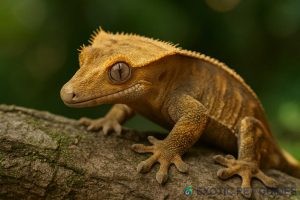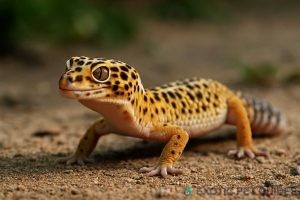Uncovering the Truth About These Fascinating Creatures
If you’ve ever admired a gecko’s sticky feet, watched one scale a wall, or considered keeping one as a pet, you may have found yourself wondering:
Are geckos reptiles or amphibians?
It’s a common question—especially since geckos look so different from turtles or snakes, and some of them even enjoy humid environments like frogs. But the answer is clear:
Geckos are reptiles.
In this blog post, we’ll break down exactly why geckos are classified as reptiles, how they differ from amphibians, and what makes them so uniquely suited to their environments.
🧬 Reptile vs. Amphibian: What’s the Difference?
To understand where geckos fit in the animal kingdom, let’s first clarify the key differences between reptiles and amphibians.
| Feature | Reptiles | Amphibians |
|---|---|---|
| Skin | Dry, scaly skin | Moist, smooth skin |
| Eggs | Laid on land with leathery or hard shells | Laid in water, jelly-like |
| Metamorphosis | No metamorphosis | Undergo metamorphosis (e.g. tadpole to frog) |
| Habitat | Mostly land-dwelling | Require water for at least part of their life |
| Examples | Snakes, lizards, turtles | Frogs, toads, salamanders |
✅ Why Geckos Are Reptiles
Geckos belong to the class Reptilia, which includes snakes, lizards, turtles, and crocodiles. More specifically, they’re part of the order Squamata, which includes lizards and snakes.
Here’s what makes geckos distinctly reptilian:
1. Scaly Skin
Geckos have tough, dry, scaly skin that protects them from water loss and injury. Unlike amphibians, they don’t need to stay moist to survive.
2. Egg-Laying on Land
Most geckos lay soft-shelled eggs on land, hidden in moist but not aquatic environments. Some species are even viviparous—giving birth to live young.
3. No Metamorphosis
Geckos hatch looking like tiny versions of adults and do not undergo metamorphosis like amphibians do.
4. Cold-Blooded with Lungs
Geckos are ectothermic (cold-blooded) and breathe through lungs, not through their skin or gills.
🌍 But What About Their Love of Humidity?
It’s true—some gecko species, like Crested Geckos or Tokay Geckos, thrive in high-humidity environments. This is where the confusion often comes in, as amphibians also love moisture.
However, even moisture-loving geckos still meet all the reptile criteria. They don’t absorb water through their skin, and they still lay their eggs on land. The humidity simply helps with shedding and hydration, not survival through skin like in amphibians.

🦎 Fun Facts About Geckos
- Geckos can regrow their tails if lost to predators.
- They have adhesive toe pads that let them climb vertical surfaces—even glass!
- Some geckos, like Leopard Geckos, have eyelids, which is rare among lizards.
- There are over 1,500 species of geckos worldwide.
📝 Final Answer: Geckos Are 100% Reptiles
Despite their small size, unique behaviors, and sometimes moisture-rich habitats, geckos are not amphibians. They are reptiles through and through—scaly, land-dwelling, egg-laying creatures with no metamorphic life stage.
So next time you see a gecko climbing your window or basking under a heat lamp, you’ll know exactly what kind of animal you’re looking at.
